|
This Steller’s Sea Eagle was photographed from the tourist boat at Rausu, Hokkaido, Japan. I used the tripod-mounted Canon 800mm f/5.6L IS lens and the EOS-1D Mark IV. ISO 400. Evaluative metering +1/3 stop: 1/4000 sec. at f/6.3 in Manual mode. Central Sensor on the bird’s breast/Rear Focus/AI Servo AF active at the moment of exposure. Click here if you missed the Rear Focus Tutorial. A Double Bubble Level in the camera’s hot shoe ensured that the bird would be square to the world. (The captain puts the boat up on the sea ice for stability so there is no rocking and rolling to deal with.) For a greater appreciation of the image, left-click on the photo. |
Taking a More Aggressive Approach to Flight and Action Photography Can Pay Big Dividends…
As a decade long disciple of Byron Katie, The Work; who would you be without your story?, I have learned to question my own unquestioned thoughts and beliefs by asking simply, “Is it true?” For nearly two decades I have been telling folks, “I an not very good at flight and action photography. I leave that to the younger, stronger, faster folks with quicker reflexes. I am at my best photographing static birds; it’s then that I shine.” That’s my story, but on the Japan IPT–still in progress, I began to question it….
For more than two decades I have been telling folks: “When unexpected action occurs, push the shutter button.” Heck, I am pretty sure that you will find those words in the original “The Art of Bird Photography” (Amphoto, NY: 1998). And to think that that was with film…. I am sure that I gave that advice in the all new follow-up, “The Art of Bird Photography II” (916 pages, 900+ images on CD only). With digital, that advice rings even truer. But in believing my own story I had become trapped into not practicing what I have been teaching. On our second morning on the sea eagle boat I was lining up a pristine vertical Steller’s Sea Eagle portrait when I asked myself “Is it true? Are you really poor at capturing images of flight and action?” At that moment I decided that whenever an eagle took flight I would do my best to keep the active sensor on the bird and push the shutter button.
As you can see above (and below), the results were astounding. The more I tried the more I improved and the better the results became. I got some great images of the eagles and gulls gathering to take flight, of birds lifting off the ice and of birds landing. And some killer tight flight images as well. All because I decided to question my own story and start pushing the shutter button.
|
This Glaucous-winged Gull image was created with the hand held Canon 300mm f/2.8 L IS II lens, 1.4X III TC, and the Canon EOS-1D Mark IV. ISO 400. Evaluative metering +2/3 stop: 1/3200 sec. at f/5.6 in Manual mode. Note on this sunny morning this exposure quickly became my go-to exposure for any birds with bright whites. Central Sensor/AI Servo Rear Focus active at the moment of exposure. Click here if you missed the Rear Focus Tutorial. Click on the image to enjoy a larger version. |
In the past, when a bird would raise its wings I would think: “I need a shorter lens. I need to zoom wider. I might cut off the wings.” With my new attitude I quit thinking and push the shutter button. Heck, it’s digital. Your gear cost from $2,000 to well more than $20,000 and your trips may cost the same. Storage and computers have gotten cheaper but those costs still add up. After your initial outlay, however, digital is free (even though that initial outlay is considerable). So go ahead, get in the habit, when the bird moves press the shutter button and see what you get. You might be pleasantly surprised.
|
This White-tailed Sea Eagle was photographed with the hand held Canon 300mm f/2.8 L IS II lens, 1.4X III TC, and the Canon EOS-1D Mark IV. ISO 400: 1/2500 sec. at f/5.6 in Manual mode. To get the right exposure here I simply opened up one shutter speed click from the go-to white exposure that I mentioned in the preceding image. With no bright whites on the bird I did not mind having to recover a bit in the snow in exchange for getting more detail in the bird’s darker feathers. Central Sensor/AI Servo Rear Focus active at the moment of exposure. Click here if you missed the Rear Focus Tutorial. Click on the image to enjoy a larger version. |
Unless I am doing body parts images such as head portraits, front-end verticals, feather detail, and the like, I generally prefer that my subjects take up no more than three-quarters of the longest dimension of the frame. So when I am photographing birds in flight and they get larger in the frame than that, I simply quit. But not any more. Now I call images like the one above “fit-’em-in-the-frame miracles.” I have been getting a few of those lately now that I let go of my old story.
|
This White-tailed Sea Eagle was photographed with the hand held Canon 300mm f/2.8 L IS II lens, 1.4X III TC, and the Canon EOS-1D Mark IV. ISO 400: 1/2000 sec. at f/4 in Manual mode. Careful readers will surmise (by comparing the exposure here with that in the previous photo) that we were working here in less than full strength sunlight. And they would be correct. Central Sensor/AI Servo Rear Focus active at the moment of exposure. Click here if you missed the Rear Focus Tutorial. Click on the image to enjoy a larger version. |
Part of my recent inspiration came from watching Robert O’Toole for the past few years keep firing as birds flew right at us. That well after I had given up and lowered my lens. Many times in these situations the AF system will not track accurately and many times you will mis-frame the image, but as you can see here the results can be stunning. This one is just a small crop form our left and frm below.
|
This adult Glaucous-winged Gull was photographed from the boat on the sea ice with the hand held Canon 300mm f/2.8 L IS II lens, 1.4X III TC, and the Canon EOS-1D Mark IV. ISO 400: 1/5000 sec. at f/5.6 in Manual mode. Central Sensor/AI Servo Rear Focus active at the moment of exposure. Click here if you missed the Rear Focus Tutorial. Click on the image to enjoy a larger version. |
Prior to the Japan adventure, when a bird would shake its head–they do that often–I would think, “It ruined my perfect field guide portrait.” Since my attitude adjustment, I quit thinking and push the shutter button. Head-shakes can be difficult to anticipate. But if you try you can wind up with flying spray and some neat head positions.
A Caution
Please do not read the above and be encouraged to be come a mindless machine-gunner. Lord, there were many of them on the eagle boat. What is a mindless machine gunner? A photographer who pushes the shutter button and holds it down on any bird that flies by without regards to light angle, the bird’s flight path, the direction of flight–towards or away from you, the framing, and the size of the bird in the frame. If it moves, they make 10, 20, even 30 or more images on a single fly by. I am never sure of their motivation; perhaps they think that they are impressing others? Amazingly, most mindless machine gunners are toting in excess of $20,000 worth of photographic gear. Go figure…. BTW, on most passes I take 2 to five images at most even with my new attitude.
BIRDS AS ART Bulletin #399
BIRDS AS ART Bulletin #399 is on line and can (best) be viewed here. If you have not seen it do visit and check out the collection of Snow Monkey images. Please note the corrected date for the F3C Convention as noted in item next.
- JAPAN IPT REPORT: PART I/THE SNOW MONKEYS
- THE BLOG IS THE BOMB
- F3C CONVENTION
- NIK Color Efex Pro
- POSSE NEWS: JIM NEIGER
- POSSE NEWS: ROBERT AMORUSO
- IPT UPDATES
F3C CONVENTION/Date Correction
Thanks to the generosity of Canon USA and the Explorers of Light program I will be keynoting at the Florida Camera Clubs Council 2012 Annual Conference, “Pixels to Print:” March 23-25, 2012 at the Naples Hilton, Naples, FL. Fellow Canon EOL George Lepp will also be appearing among a large cast of skilled presenters and speakers. In addition to the keynote I will be doing a field workshop at Tigertail Beach. You can follow the links here for complete information.
Shopper’s Guide
Below is a list of the gear used to create the images talked about in this blog post. Thanks a stack to all who have used the Shopper’s Guide links to purchase their gear as a thank you for all the free information that we bring you on the Blog and in the Bulletins. Before you purchase anything be sure to check out the advice in our Shopper’s Guide.
Shopper’s Guide
Below is a list of the gear used to create the image above. Thanks a stack to all who have used the Shopper’s Guide links to purchase their gear as a thank you for all the free information that we bring you on the Blog and in the Bulletins. Before you purchase anything be sure to check out the advice in our Shopper’s Guide.
Canon 300mm f/2.8 L IS II lens. The 300 f/2.8 L IS II with the 1.4X III TC is a killer flight combination.
Canon 800mm f/5.L IS lens. Right now this is my all time favorite super-telephoto lens.
1.4X III TC. The new Series III 1.4X was designed to work best with the new Series II super-telephoto lenses.
Canon EOS-1D Mark IV professional digital camera body. My two Mark IVs are my workhorse digital camera bodies.
And from the BAA On-line Store:
LensCoats. I have a LensCoat on each of my big lenses to protect them from nicks and thus increase their re-sales value. All my big lens LensCoat stuff is in Hardwood Snow pattern.
LegCoat Tripod Leg Covers. I have four tripods active and each has a Hardwood Snow LegCoat on it to help prevent further damage to my tender shoulders 🙂
Gitzo GT3530LS Tripod. This one will last you a lifetime.
Mongoose M3.6 Tripod Head. Right now this is the best tripod head around for use with lenses that weigh less than 9 pounds. For heavier lenses, check out the Wimberley V2 head.
CR-80 Replacement Foot for Canon 800. When using the 800 on a Mongoose as I do, replacing the lens foot with this accessory lets the lens sit like a dog whether pointed up or down and prevents wind-blown spinning of your lens on breezy days by centering the lens directly over the tripod.
Double Bubble Level. You will find one in my camera’s hot shoe whenever I am not using flash.
The Lens Align Mark II. I use the Lens Align Mark II pretty much religiously to micro-adjust all of my gear an average of once a month and always before a major trip. Enjoy our free comprehensive tutorial here.
Canon EOS-1D Mark IV User’s Guide. Learn to use your Mark IV the way that I use mine. Also available for the 7D and the Mark III here.
BreezeBrowser. I do not see how any digital photographer can exist without this program.

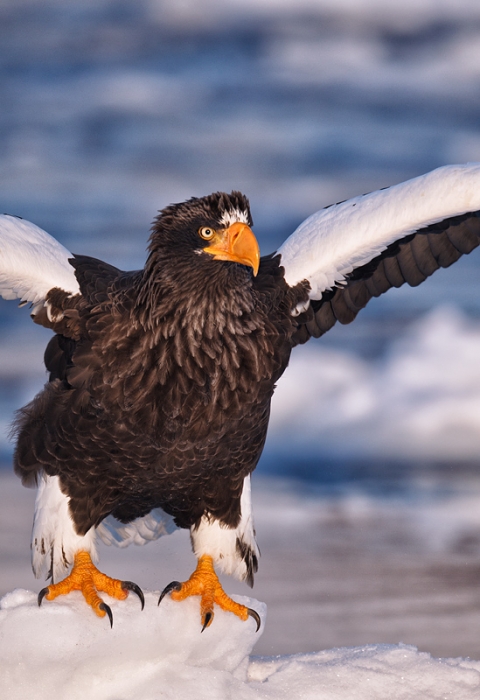
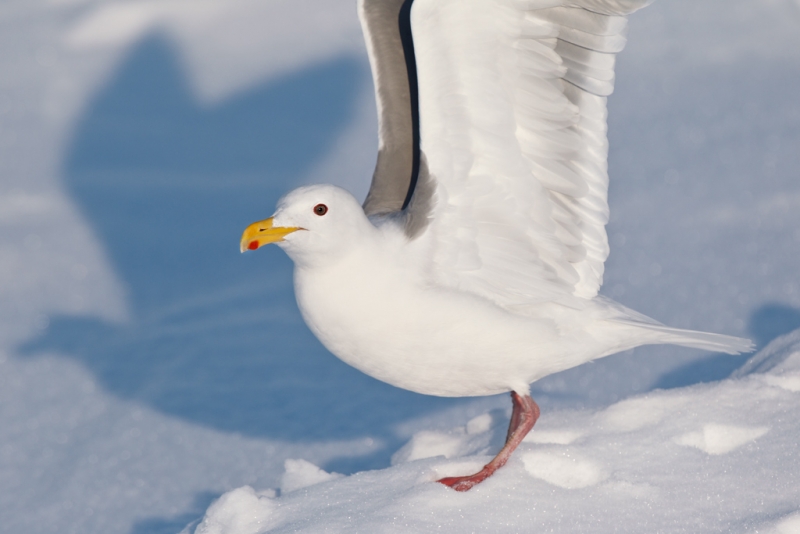
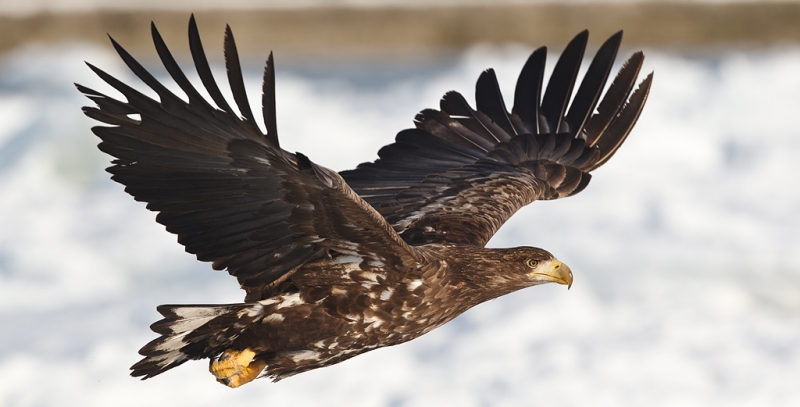
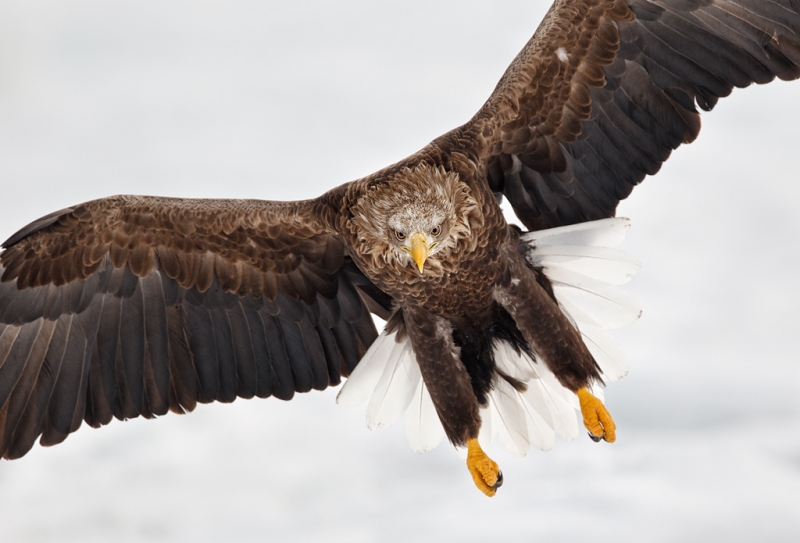
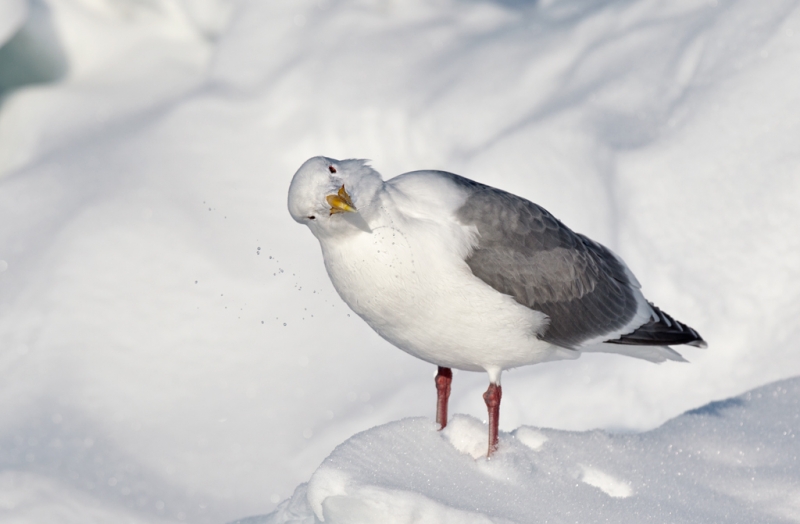













Geoff: Since you were kind enough to ask “others,” here’s my take. I have no doubt that 6 fps will be enough for you (and would be enough for me; I think the slow continuous shooting on the 7D is 3 fps), and no doubt that the IQ of the 5D3 will be better than the 7D’s, and at least as good as the 5D2’s. It seems likely that the AF will be at least as good as the 7D’s, if not better. For me, that leaves 2 issues: crop factor and price. The pixel density of the 7D’s sensor is much higher than the 5D3’s–I think 2X–and I can’t see how that won’t make a difference when you’re focal-length limited, as I so often am. But Artie sold his 7D for the 1D4, also considerably less pixel-dense. As for price, for my purposes, the 7D is so good that although the 5D3 will obviously be better, I can’t justify $3,500 and the loss of use of my EF-S lenses, although my birding lenses are all EF and will work on the 5D3. If money weren’t an object I’d already have pre-ordered the 5D3 through this web site! I think Ken Rockwell probably is right when he says it’s Canon’s best DSLR.
David
First let me say great images of the sea eagles.
I admit that when I had the 7D as my first serious DSLR (from an T1i) and also at the same time purchased the 100-400 that when I first started trying BIF images of local sea gulls I was a shame-less machine-gunner! However, it doesn’t take long for an intelligent person (I’d like to think of myself in that category) to realize that it needs to be controlled exactly as you mention in this post. I think that I’ve gotten much better in waiting for better images before letting the 8FPS take over. I actually don’t really like 8FPS and often keep the 7D on the regular burst which I’m not even sure how fast that is.
I’ve recently encountered a new conundrum in that I bought a 5dmkII and have fallen in love with the IQ compared to the 7D. So much that the 7D has been hardly touched in the last month. I’m considering replacing the 7D with the new MKIII 5D with only 6FPS. I find the 5DmkII files are equal when cropped down to the 7D’s natural crop factor so don’t want to deal with a crop sensor anymore. With the inclusion of the 1DX’s 61pt AF system and all the fancy new AF tracking options in the new dedicated menu, I think the 5DmkIII could be a good birding camera even with only 6FPS.
What do others think about only having 6FPS and no crop factor (Nikon guys seem to do okay without the crop factor)? I’ve also considered a 1dmkIV but I like the more compact 5D size for travel but if the prices start to drop on the mkIV then hopefully can add one alongside the 5Ds specifically for BIF.
I already have my 5D III on order. I do not consider 6fps to be any sort of handicap at all in 99% of avian photography situations. Others may disagree.
I do to. Do you think it will work for BIF at 6FPS? I’m fairly confident that I will be okay with that frame rate.
Sorry, only read the first sentence in my email notification. Ignore my question, good to hear!
Your question in the pane above is a bit more specific. For my style of photography, it should be perfect. Then we will see what the 1D X brings to the table 🙂
Hi Artie. Great images. I agree with your new thinking. To me, if you get too much tunnel vision with a personal idea of how a photograph should be composed, you run the risk of vastly reducing your chance of getting that one in a million unexpected shot or even have no chance of getting it if you give up even taking shots in situations that aren’t usually very productive.
I agree, especially with regards to somewhat new and different compositions.
Artie thanks so much for posting the beautiful sea eagle photos. I have always wanted
to see them “live” and your photos helped me achieve part of that goal at least. Thanks
again. Jim
The big lesson for me in today’s blog is your reminder to me to challenge what I believe to be true, to experiment, to learn, to evolve. You are truly a life-long learner as well as an educator and I find that to be inspirational.
Many thanks for your kind words. I am just sharing what others have shared with me.
http://www.birdphotographers.net/forums/showthread.php/1949-Bumping-the-focus-for-BIF/page2?highlight=Bump+focus
This is the Bible Thread on HH and shooting BIF. No doubt it can be applied to long lenses on tripods too.
When it is time to capture: short controlled bursts.
When I was with Jim in 2009 on his boat my guess is 5-10 per burst; however there might be several bursts as Jim followed the bird.
Generally speaking I agree with you about “machine gunners”. With some exception: perhaps they are still learning. I understand the difference is made by their attitude (if they are showing off or not) and I think I understand what you mean. But – for instance – I’m still getting a low score in getting focused BIF (primarily because I have to learn, but also because I don’t have $20,000 worth of equipment 😉 the Nikkor AF-S 300 f/4 with a focal multiplier is not super fast – so, whenever I have a chance (unfortunately, if I’m lucky I can enjoy shooting at BIG only once per month), I “machine gun” them also when I know that no photo will be a keeper, but just to check whether I’ve been able or not to get them in focus.
The worst “offender” on the eagle boat was no beginner. He had $30,000 worth of specialized gear. He just had no concept of what makes a good iamge. And most machine gunners that I know have tons of gear and have been photographing for years….
Artie: As usual, you’re right; I actually don’t often fire off “a dozen or more frames.” It’s usually more like 3-6 unless I’m not sure when exactly the sweet spot will arrive, then I do a few more.
David
The younger faster folks like Robert can often fire off 10-15 sharp, well-framed images in a single burst. I no longer have the motor skills to do that. Or at least that’s my story :).
Haha! I laugh at the irony here. My old Olympus only allows 3 images in RAW, then it takes 20 seconds to save them! 🙂
And, yes, close cropping or, if you feel lucky, zooming, can make a strong image. I love the first and third, and the Glaucous Winged Gull shots are comical. Image 2 looks like a butterfly pose. and the last one says, “Did you really take one of that butterfly pose? OMG! I’ll never live it down!” By the way, I’m surprised how similar they are to the Herring Gulls.
Note the light grey primaries that are black in Herring Gull.
Yes indeed, and glaucous means blue-grey, which I don’t think the Herring Gulls have.
Geoff: Isn’t there a middle ground? Of course the way you describe machine-gunning it’s silly, but for the short period when everything is right or nearly right, then why not?
But–true confessions time–there is an adrenalin rush when the bird is right where you want it and you can click off a series of shots at 8 fps (7D). That adrenalin rush led me to extremely silly machine-gunning at the only space shuttle launch I ever saw. Of course, 3 fps would have been more than enough for the shuttle, if continuous shooting was needed at all. But seeing that thing was so exciting that I wasn’t thinking clearly.
David
As I keep saying, “When everything is right, it is fine to hold the hammer down.” Mindless machine gunners hold the hammer down when the situation is bad.
Lord knows Artie can speak for himself 😉 but I’m with him (and with Doug): “machine gunning” a bird in flight is not useful when it is
* still 100 yards away, and barely a speck in the frame;
* flying away from you;
* in bad light;
* with a miserable background.
It is useful to acquire focus on an approaching bird as soon as you’re able to do so. But you can hold focus without shooting simply by keeping the shutter button half-depressed.
Thanks Geoff, All excellent points! I have spoken for myself below :).
Machine-gunner technique lets you get that once-in-a-moment shot. The osprey flies by and tilts its head up and down and left and right looking at the water below. Take 2 to 5 shots and you might miss that interesting image. Just like you say about capturing the headshake in photo#3.
Also, most photographers who are machine-gunners shoot in JPEG rather than RAW.
Hey Sue, Thanks for teaching me about bird photography :). As I have made very clear folks who are using JPEG capture are not serious nature photographers. I guess if you are wasting your time you might as well take 50 bad shots of every bird that flies by.
The purpose of this post is to get folks to understand that before they make a good flight image they need to understand the factors that go into making a good flight image; when they all come together, then it is fine to hold the hammer down.
I have really focused on BIF (birds in flight) photography since getting back to the states. I just went to the butterfly migration in California. I was shooting a lot of BIFs…butterflies in flight ;-0. I was pretty pessimistic but was surprised to get a few in focus, good light and good wing angle. Shooting them in flight is like tracking a beserk fighter pilot. I have not managed to get good with one focus point but rely on the 45 and a high f stop. BTW, since you don’t offer the 800mm on BAA I can’t take Denise’s suggestion to use my winnings on that. A pity. Still looking for a suggestion but thinking about one of the composition maps. Which one is the best first buy?
Do you have ABP and/or ABP II? Or both?
Of Gloria’s e-books I would recommend Composition Maps over Natural Design by a small margin as a first purchase.
Not sure if this applies to you but many who visit the blog do not realize that the BAA Online Store carries all manner of tripods, tripod heads, photographic accessories, a bit of clothing and footwear. We sell most everything that I use everyday, we teach folks how to use it, and–the big difference between us and other online shops is that we do not sell junk. Ever.
Artie: Great shots. I have taken that approach for quite a while, and I’ve got some good shots that way myself. I agree with Jay Gould; why not shoot off a dozen or more frames? If I’ve got the composition about right, and the light is about right, then I sometimes find that one of the dozen or more rapid-fire images stands out because of what the bird is doing (the wing angle, the position of the bird’s head, the eyes being open rather than closed, the light on the wings, and so on), and the action is too fast for me to get it any other way. This is especially true of hummingbirds, but it applies to others. I agree with Doug West that it’s easier to review 5 images than 20, but it’s even easier not to take any photos at all.
I do envy you your sea eagle. Great shots of a magnificent bird,
David
By your description above you are not a mindless machine gunner. But on the other hand, for flight photography, it is extremely rare to have a good situation in front of you for “a dozen or more frames.”
Pixels are free!!
If you are tracking a fast moving bird why not use 100% of what you purchased? The full buffer depending upon the camera!
Ah our stories!! Facts are Facts; Stories create and rule our Emotions; see at Landmark Education. I did the Grand Relative [EST] of this approach in 1976; Jackie and I did it together in 2003. Life changing if you are open.
Great images Artie; the Gull should be winking at you! 🙂
Why not use 100% of what you purchase? Machine gunners are wasting their time–both in the field and at the computer (the latter deleting thousands of lousy images that had zero chances of being keepers much less good images, missing the good opportunities while tracking garbage, and filling their buffers needlessly; as Doug West noted below when the good pose is there their buffers are often full.
But if mindless is your choice I am fine with that :). I will check out your link when I have some more time.
I’m sure there are more, but there’s at least two disadvantages on being a machine gunner that I can think of…
1. If you’re firing off 20 shots and shooting raw, you’re probably going to fill your buffer. Even if its only a second, that one second you can’t do anything might be that one
second the bird did something even more extraordinary.
2. I don’t know about anyone else, but when it comes to reviewing my images, I much rather try to pick out the best of the best from 5 relatively identical images vs 20.
Doug
Agree 100%,